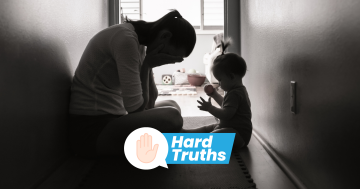
It’s good to see Federal and State/Territory governments joining forces to address domestic violence, funding a $100 million campaign against this behaviour.
Statistics indicate thousands of women are injured by partners each year, although I could find no break-up by State and Territory. Nevertheless we know it does occur here in the ACT as elsewhere, we have a selective $30 rates levy to prove it, and thus is a legitimate cause for concern.
Apparently this abuse can take a number of forms including physical, mental, financial and social and sometimes involves rape. Those affected cover all sections of society: rich and poor, ethnic and indigenous, rural and city, women and men.
As I pointed out in earlier opinions on the subject however, we do not know why domestic violence occurs and until we adopt a proactive rather than a reactive approach to the problem we will not be successful in properly addressing the issue.
Pamphlets, advertisements and articles might publicise the crime but will not help solve why normally sensible civilised men (and women) batter or psychologically hurt their partners.
The breakdown of loving relationships can be the result of much: immaturity, jealousy, incompatibility, failure to live up to expectations, age differences, financial hardship, even children, but unpleasant as the separation might be it does not always stem from assault. In many cases of domestic violence there is no intention of marriage breakup, yet the perceived failings above can be present.
So are we dealing with misogynists? But then why do they marry? Or are these men – let us concentrate upon males although the problem can apply to females too – so lacking in confidence they need a physical or verbal punching bag, a factor not always borne out by their behaviour elsewhere?
And why do the women stay with these men? For the sake of the children, no money, nowhere else to go? Even, oddly, love?
It is this dilemma society addresses and while it is both compassionate and understandable to do so our efforts do not go far enough if we are to control this social horror.
How much is society to blame for domestic violence? It has been around for a long time and just because it has more recently become the flavour of the month due to several well-publicised incidents is no reason not to curb the blight. We need to check our enthusiasm however, not to become too specialised or we might find ourselves in the Section 18c Racial Discrimination Act situation of trying to cover all bases.
Nevertheless liberalised alcohol, financial expectations and drug attitudes could play a part. Our increasing attention to our rights as opposed to our responsibilities leading to well-meaning privacy laws also protects the offender – for the sake of the family – from being named and removes any sense of public shame.
Finally, while I am reluctant to impose further controls upon society, there are no examinations for our suitability to marry, cohabit or beget children.




















